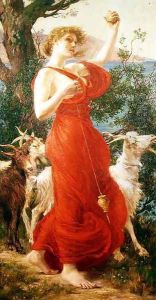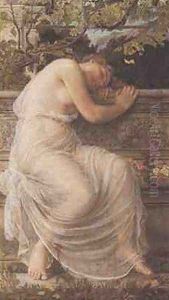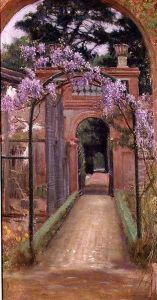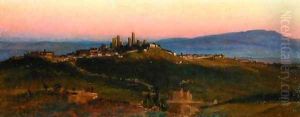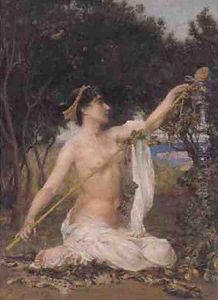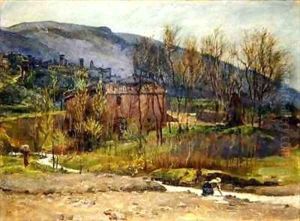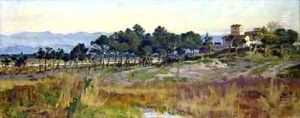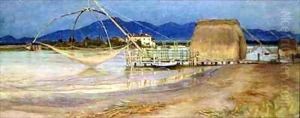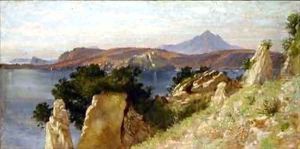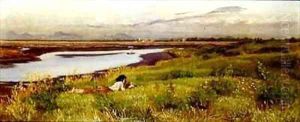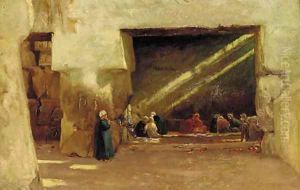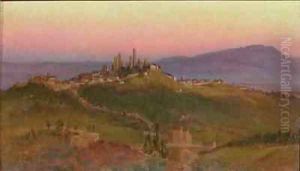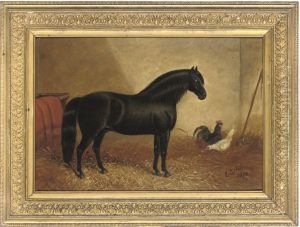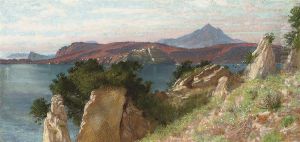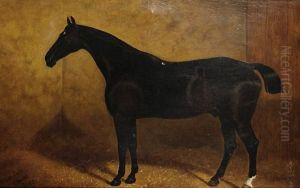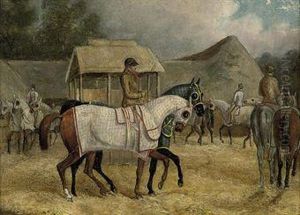Edith Ridley Corbet Paintings
Edith Corbet (née Ridley) was a distinguished British landscape painter associated with the second phase of the Pre-Raphaelite movement. Born in 1846, she was part of an era that saw significant change and evolution in the world of art, particularly in Britain. Her artistic journey was notably influenced by the Pre-Raphaelite Brotherhood's dedication to naturalism, attention to detail, and vivid use of color, although she developed her unique style that often blended elements of impressionism into her landscapes.
Edith married the painter and illustrator Matthew Ridley Corbet in 1871, which marked the beginning of a lifelong partnership in art and life. Matthew was also influenced by the Pre-Raphaelites, and together, they were part of a circle of artists who were breaking new ground in their representation of the natural world. The couple lived and worked in Italy for several years, especially near Florence, where the Italian countryside and light significantly influenced Edith's work. Her paintings from this period are known for their serene beauty, meticulous detail, and the harmonious blending of colors.
Corbet is especially recognized for her portrayal of the English and Italian countryside, utilizing a soft yet precise brushwork that captures the ephemeral qualities of light and atmosphere. Her works often depicted tranquil scenes, gardens, and pastoral landscapes that evoke a sense of calm and timeless beauty. Despite her alignment with the Pre-Raphaelites, Edith Corbet's work also foreshadowed some aspects of Impressionism, particularly in her treatment of light and color.
Throughout her career, Edith Corbet exhibited her work at various prestigious venues, including the Royal Academy in London, though she never became a member. Her contributions to landscape painting were significant, yet her work was somewhat overshadowed by her male contemporaries and only recently has begun to receive the recognition it deserves.
Edith Ridley Corbet passed away in 1930, leaving behind a legacy of beautiful, evocative landscapes that continue to be admired for their quiet majesty and technical skill. Her work stands as a testament to the blending of Pre-Raphaelite ideals with the emerging sensibilities of modern art, marking her as a unique figure in the transition of styles during the late 19th and early 20th centuries.
